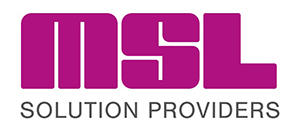Rotation of cleaning products in the cleanroom is a fundamental process that is well recognised and exercised. But have you ever stopped to question whether the product you are using actually meets the acceptable standards for sporicides? Moreover, are you aware that the British and European test method for sporicidal products has recently been revised?
Therefore products that may have met the requirements of the previous 2002 version of the standard will now need to be tested against the much more stringent version of the BS EN 13704:2018 method.
Overview of the revised test method
A sample of the product is added to a test suspension of spores in a solution of interfering substance. The mixture is maintained at the contact time and temperature specified.
At the end of this contact time an aliquot is taken and immediately deactivated (neutralised) by a validated method.
The numbers of surviving organisms are determined and the reduction calculated.
Key differences between previous sporicidal test method and the new standard:
- The test is performed using Bacillus subtilis as the standard organism, as in the previous method. However additional sporicidal activity against anaerobes and aerobes for specific uses is now required with testing against Clostridium sporogenes and/or Bacillus cereus. Other organisms such as Clostridium difficile are only required to support named organism claims under appropriate circumstances.
- The obligatory test conditions have been revised, now including minimum and maximum conditions for contact time and temperature, also the option of high soil (dirty) conditions.
- The spore preparation methods have been modified and now include a longer maturation time and heat treatment.
- The spores are verified by testing against glutaraldehyde and peracetic acid at two concentrations to assess resistance and susceptibility.
The revised method states that any results obtained from the previous version are NOT VALID.
You should always ask your supplier to provide the most up to date testing certificates to check they meet the requirements. If in doubt you can always send us a copy of the report and we will give a free, independent, technical review of the results.
To discuss this test method or for any other enquiries, please contact Carolyn Burney: Carolyn.Burney@MSL.io





